Public broadcasting’s roots in Urbana
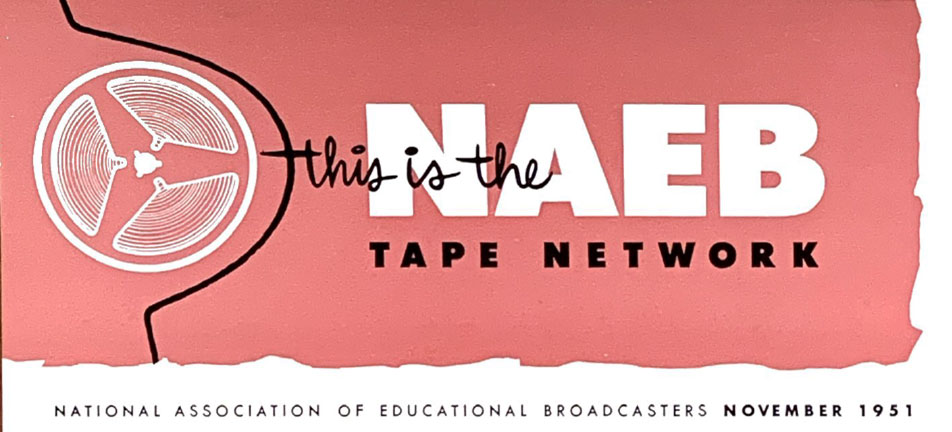
Did you know the roots of public broadcasting were cultivated here in central Illinois? While some saw radio as merely a profit machine, early radio advocates at the University of Illinois saw the technology’s potential to expand upon the university’s mission as a land-grant institution to make education accessible to the wider public. The dissemination of high-quality educational and cultural content to all Illinoisians has been central to WILL’s mission ever since, and the conversations held at WILL and among University of Illinois faculty helped pave the way for the development of public media as we know it today.
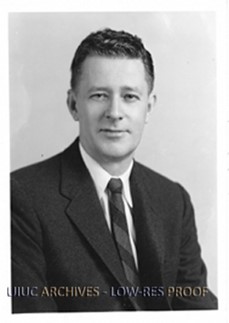
Wilbur Schramm
In 1948, University of Illinois Professor of Communications Wilbur Schramm brought members of the National Association of Educational Broadcasters (NAEB) to Urbana to discuss the organization’s mission and determine how to attract funding. Founded in 1925, the NAEB was an informal association of station managers from mostly midwestern colleges and universities who were struggling—as WILL was—to secure their spots on the dial amid the commercial takeover of the airwaves in the late 1920s and ’30s. Members of the NAEB had a collective vision that the radio could be an effective tool for educational outreach, but at this point, the NAEB lacked the staff and cohesion necessary to keep this vision alive. Schramm sought to change this. At this conference, Schramm laid the groundwork by posing such questions as, “Would high-quality educational programs appeal to mass audiences?”, “Where would this programming come from?”, and “Who would build, pay for, and operate these educational stations?”
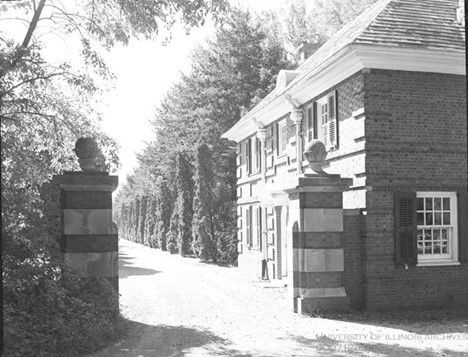
Allerton Gate House in 1951
In July 1949, these discussions expanded into a two-week-long seminar at the Allerton Retreat Center, underwritten by the Rockefeller Foundation. Schramm invited educational broadcasters from around the country to participate in the think tank, as well as politicians, commercial broadcasters, and academics from various disciplines. The conference, known as Allerton I, took place during an intense prairie heatwave, which may explain why the attendees quickly tossed out Schramm’s carefully planned agenda. Instead, they focused on one key question: “What is the job of educational broadcasting?” The conclusions they drew during Allerton I and the strategies they devised during Allerton II the following summer would go on to form the philosophical cornerstone of public broadcasting.
Conference attendees decided the purpose of educational broadcasting was to serve the audiences that commercial stations had forgotten, to capture the diversity of human experience in its programming, and to make education widely available outside the classroom. To do this, the NAEB would create the first centralized record and tape exchange between noncommercial stations across the country, called a “bicycle network.” They also decided the NAEB should have full-time staff and an official headquarters in Urbana that would house the program production and distribution center. In 1951, after Schramm secured funding from the W. K. Kellogg Foundation, the NAEB moved into Gregory Hall, which WILL had also called home since 1942.
As the name suggests, the bicycle network was a fairly low-tech operation. Gregory Hall housed two noisy machines that could only make 22 copies at a time from a master recording. These audiotapes were mailed to the 100 member stations across the country, which were owned by universities, colleges, municipalities, school boards, and labor unions. For a small yearly service fee, stations could fill the airtime necessary to meet the Federal Communication Commission’s daily broadcasting requirements for license renewal. After a station aired a program, the tapes were “bicycled” by mail to the next station, then eventually shipped back to Urbana, where technicians would record new programs over them.
In its 1951 brochure, the NAEB succinctly summarized its mission for prospective member stations: “The NAEB Tape Network is predicated on the simple belief that the use of radio exclusively for entertainment and the selling of merchandise is a serious waste of a major national resource. In addition to these uses, radio broadcasting is capable of being an important instrument in the dissemination of information, opinion, discussion, and interpretation essential to the solving of today’s complex problems. Radio can also provide, and on a vast scale, meaningful cultural experiences. To this kind of radio broadcasting, the NAEB is dedicated.”
The network quickly took off. By 1954, WBEZ in Chicago reported that teachers were regularly using NAEB programming in their classrooms. By 1958, the NAEB had filled 125,00 hours of air time and distributed 7,400 programs, supplying stations with 20 hours of content per week. WILL produced a number of these nationally distributed programs, including a concert series and an immensely popular children’s radio show called Stories ’n Stuff, which aired five days a week for 16 years.
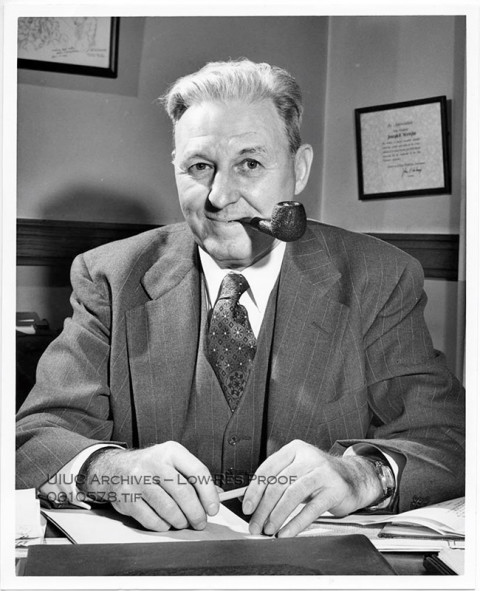
Josef Wright in 1952
The NAEB did much more than just oversee the production and distribution of educational programs. It provided vital training and support to noncommercial stations across the country, publishing newsletters, fact sheets, technological articles, and a monthly journal for NAEB members. It also provided engineering and tech training to support new educational television stations, including WILL-TV, which came on air in 1955. It advised them on creating budgets, working with unions, negotiating music licenses, and hiring staff. The NAEB also ran a job-placement service and held seminars on station management, production, scriptwriting, communications law, and other aspects of broadcasting.
The NAEB and WILL were intrinsically linked. Not only did they share the same building, but many WILL employees sat on NAEB committees and held executive positions. For instance, Josef Wright, WILL’s first director (1925–1948) and director of public relations for the university, served two terms as the president of the NAEB. Wright’s successor at WILL, Frank Schooley, had a long association with the NAEB, serving as executive secretary (1937–43, 1952), treasurer (1951–54), and president (1944–45, 1955–56) and sitting on the board of directors (1947). Schooley began his 43-year career in broadcasting in 1929 as WILL’s first full-time employee and was director of WILL from 1948 to 1972.
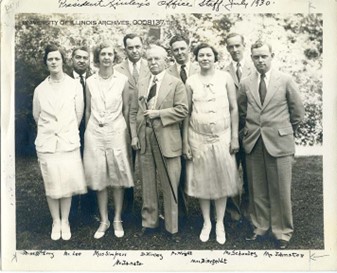
Josef Wright and Frank Schooley with University of Illinois President David Kinley in 1930
In 1961, the NAEB moved its headquarters to Washington, DC, to more effectively campaign for federal support of a national public television and radio system. Due to the NAEB’s lobbying efforts, congress passed the Public Broadcasting Act in 1967, creating the Corporation for Public Broadcasting (CPB). Out of the CPB came the Public Broadcasting Service (PBS) in 1969 and National Public Radio (NPR) in 1970.
Even though the NAEB was no longer located in Urbana, WILL continued to play an active role in ensuring the success of the new public broadcasting system. President Johnson appointed Frank Schooley to the CPB’s board of directors for the 1968–70 term, and President Nixon reappointed him for another 6 years. Schooley’s successor at WILL, Donald P. Mullally, would also go on to serve on NPR’s board of directors in the 1980s, saving it from the brink of bankruptcy.
A victim of its own success, the NAEB closed its doors in 1981. By that time, 80% of American homes were served by a full schedule of PBS and NPR programs. Americans had fallen in love with the likes of Big Bird, Grover, and Oscar the Grouch on Sesame Street. Fred Rogers was teaching kindness and compassion in his Neighborhood of Make-Believe. Julia Child was revolutionizing how we cook and eat. Great Performances and Masterpiece Theatre were inspiring us with high art and drama from around the world. And All Things Considered and Morning Edition were keeping us informed with in-depth, balanced reporting on the day’s most pressing issues. Today, the CPB reports that 99% of Americans now have access to public media through member stations across the country.
Though it had dropped the “educational” moniker, public broadcasting grew out of its educational roots—roots cultivated in Urbana—to become a national source of news, entertainment, and culture for millions. The mission of public broadcasting was still based on the tenets first outlined during that hot, central Illinois summer: that public radio and television could help us define our culture and values in a way the commercial networks could not.

